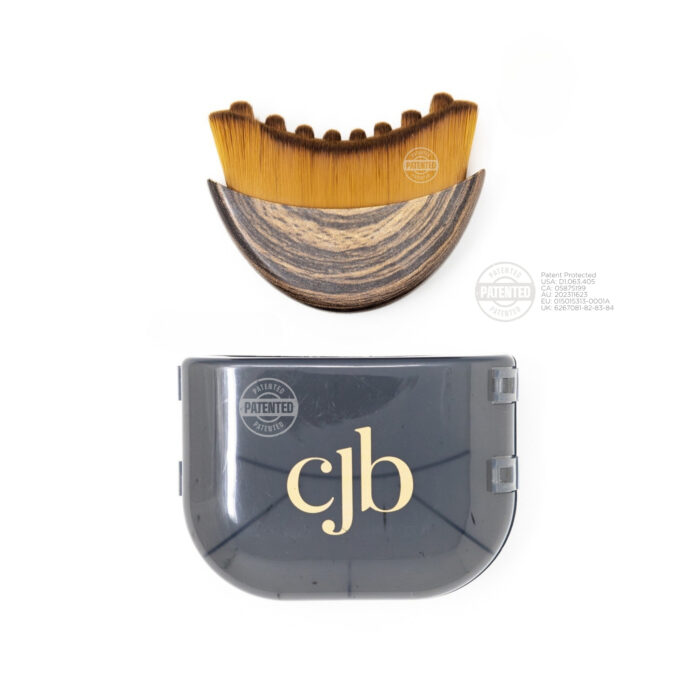The Inguinal Lymph Nodes receive lymph from the lower limbs, lower abdomen, lower back and buttocks as well as your private parts. When working the upper/lower leg start at the hip/groin to wake-up the lymphatics and support the flow of fluids and drainage. Overlapping sweeps can be a little confusing because your sweeps will be upward toward the groin area, but you will be progressively working your way downward toward your knee, ankles or toes.
THE LYMPHATIC BRUSH vs. DRY BRUSH
💦 While you can use TLB similar to a dry brush with “flicking” movements, it’s NOT the same as a dry brush, which focuses on increasing circulation, which brings fluid into the tissue.
💦 The Lymphatic Brush focuses on reducing fluid in the tissue and propelling lymph through the vessel system. It reduces excess fluid, inflammation and swelling. The density and texture of TLB bristles are designed to grip and engage the tissue in a specific way that allows for the “stretch and release” needed to manipulate the lymph vessels and propel fluid forward.
💦 Static pumping
💦 Static rotations
💦 Flicking
These repetitive rhythmic movements help break-up stagnant fluid and liberate accumulations in the tissue that can thicken and feel “spongy” and contribute to common concerns and disorders.
💦Appearance of cellulite
💦Heaviness in legs
💦Restless leg symptoms
💦Pain and discomfort
Use caution and alter treatment if you have:
Bronchitis: don’t use directly over sternum
Menstruation: can make period heavier (avoid abdomen)
Nevus: work around any raised moles
Low Blood Pressure: be careful of over-use, do shorter sessions
Hyperactive Thyroid: do not work on thyroid directly
Do not use if you have:
Active cancer (consult your medical team)
Deep Vein Thrombosis (DVT)
Congestive Heart Failure (CHF)
Acute infection or inflammation
By providing the information contained herein we are not diagnosing, treating, curing, mitigating, or preventing any type of disease or medical condition. The information on this site and in these tutorials, is for general purposes only, and not intended or implied to be a substitute for professional medical advice, diagnosis or treatment. CJB Global Imports, Inc. cannot be held liable for any actions made, implied or expressed by anyone as a result of the content contained herein and/or by purchase and use of any product. While we do our best to provide well-researched and responsible information, we encourage you to confirm any information obtained from this website, or through these videos with other sources, and review all information regarding any medical condition or treatment with your physician or medical care team. You and your doctors know your body best and are uniquely qualified to make decisions tailored to your personal needs and circumstances.





